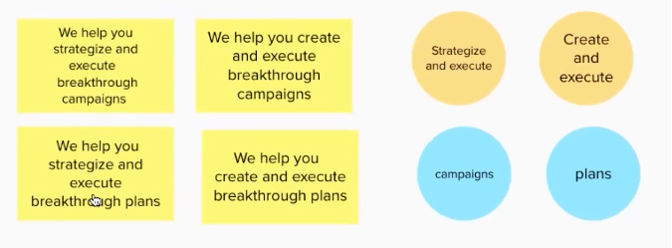Now that virtual events are here to stay, how are you making sure yours stand out and are engaging? We spoke to our team members who execute virtual events most, and they shared their key tips for keeping it interesting without getting overwhelmed by the logistics:

1. Interactive platforms are no longer unique, they’re the standard.
Make sure you’re using a platform that’s designed for engagement. At CURA, we’re fans of Zoom Webinar and Streamyard.
Zoom Webinar is best for mid-level virtual event organizers hosting a mid-sized round table and requires less attention during the event. Streamyard is a backend platform that can cast out to Facebook or YouTube depending on event needs. This platform is best for more experienced virtual event organizers hosting a branded, small group webinar and requires more attention during the event.
For the Congenital Heart Initiative, we hosted a Facebook Live via Streamyard with two Adult Congenital Heart (ACHD) disease patients—CURA’s Scott Leezer and the Adult Congenital Heart Association’s Misty Sharpe— to discuss their experiences living with a CHD. The goal of this Q&A-style event was to normalize discussions about ACHD and continue the conversation on the future of CHD care.


2. Break the ice and gather data using polls—This engagement tactic helps you get a better understanding of who has joined your event and gives your attendees a chance to share their opinions without being put on the spot. It’s important to evaluate why you’re including a poll—is it simply to break the ice or to gather valuable information that you can use later?
Keep your questions simple, straightforward and specific. If it’s an ice breaker question, make it a fun and/or timely question, e.g., “What is your favorite summer Olympics sport?” If you’re doing multiple polls throughout your event, be sure to use different question styles to gather data; this data is excellent for post-production follow up too!
In a recent media training CURA facilitated for American College Cardiology leadership, we used polls to gather insights on the attendees’ view of, and comfort level with, reporters. It was a great way to gauge where the trainees stood when it came to media and allowed us to cater the remainder of the training accordingly.

3. Break up the presentation with breakout rooms (event permitting)—give your attendees the opportunity to share their ideas!
During long Zoom meetings with a large number of attendees, smaller breakout groups can be a great way to disrupt an otherwise one-dimensional experience and give attendees the chance to voice their opinions and ideas! We’ve used this technique during several large meetings, including our own.
Bonus points: have you ever heard of MURAL? It’s a digital workspace that can help engage attendees visually and record their thoughts! Below is an example from an internal branding workshop—the platform has voting functionality as well! It’s a great way to further engage your breakout groups.


4. Use your Q&A box strategically—Don’t waste airtime with basic questions about slide availability. We recommend providing clear instructions about how attendees should use the Q&A function (duh) and then having a separate staff member monitor and respond appropriately.
For example, HEAL Collaborative convenes community conversations aimed at educating the community on different health issues. Throughout these virtual conversations, moderators encourage viewers to put a question in the chat box during the event while it’s fresh on their attendees’ minds so that there’s a queue of questions ready for the last 15-minute Q&A portion. This format helps keep the original integrity of presentations and overall flow so there’s no stop during the presentations while still allowing viewers to request further exploration of a specific topic or piece of information mentioned after all the content has been presented.
